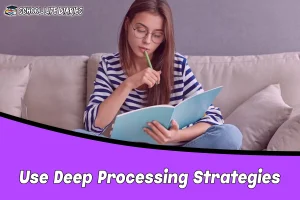Studying is an essential aspect of academic life, offering the opportunity to acquire knowledge, develop critical thinking skills, and achieve academic success. However, many students struggle with finding effective study methods that maximize their learning potential. In this article, we will explore 7 secret methods for studying that can help students enhance their study habits and unlock their full potential. Understanding the importance of studying is crucial for students as it directly impacts their academic performance and future prospects.
By dedicating time to studying, students can deepen their understanding of subjects, improve problem-solving abilities, and cultivate a sense of discipline and perseverance. Exploring alternative approaches to studying beyond traditional methods becomes imperative for students seeking ways to optimize their learning experience.
These 7 secret methods for studying aim to provide students with practical strategies that promote efficient learning while also fostering a sense of freedom in their studies. By incorporating these techniques into their study routines, students can create an environment conducive to focused learning while enjoying the flexibility necessary for personal growth.
Whether it’s setting up an ideal study space or utilizing innovative techniques like the Pomodoro Technique or Feynman Technique, these secrets offer valuable insights into transforming the way we approach studying. With a curiosity-driven mindset and a willingness to explore new avenues of learning, students can unlock hidden potentials within themselves and embark on a journey towards academic excellence.
Why Is It Important To Study?
Secret methods for Studying are considered important due to their role in enhancing knowledge acquisition and critical thinking skills, thereby enabling individuals to effectively navigate the complexities of their academic and professional pursuits. The importance of studying cannot be overstated, as it forms the foundation for intellectual growth and development.
By dedicating time and effort to studying, individuals can expand their understanding of various subjects, acquire new information, and gain insights that can contribute to their personal and professional success.
One of the key benefits of studying is its positive impact on academic performance. Through regular study sessions, students are able to consolidate their learning by revisiting concepts, reviewing materials, and practicing problem-solving techniques.
This repetitive engagement with the subject matter helps reinforce knowledge retention and promotes a deeper understanding of the topics being studied. Consequently, students who prioritize studying often experience improved grades and overall academic achievement. Moreover, studying cultivates critical thinking skills that are essential for analyzing complex problems and making informed decisions.
The importance of studying lies in its ability to enhance knowledge acquisition and critical thinking skills. By dedicating time to study regularly, individuals can reap numerous benefits such as improved academic performance and cultivated analytical abilities. Studying serves as a pathway towards expanding one’s intellectual horizons while equipping them with essential tools for success in both academic and professional domains.
How Much Does Studying Affect Students?
The impact of academic engagement on students‘ performance is a topic of significant interest and investigation. Understanding how studying affects learning and the relationship between studying and academic success is crucial for educators and students alike.
Numerous studies have shown that the amount of time spent studying has a direct correlation with grades. Students who dedicate more time to studying tend to perform better academically compared to those who do not.
Research has consistently demonstrated that studying plays a vital role in shaping students’ academic outcomes. The more time students invest in reviewing and consolidating their knowledge, the higher their chances of achieving good grades. This correlation can be attributed to various factors, such as increased retention of information, improved understanding of concepts, and enhanced critical thinking skills.
By engaging in regular study sessions, students have the opportunity to reinforce what they have learned in class, identify areas they need further clarification on, and develop effective study strategies tailored to their individual learning styles.
The impact of studying extends beyond grades alone. Academic success goes hand in hand with developing important life skills such as discipline, time management, and perseverance. When students allocate sufficient time for focused study sessions, they learn valuable lessons about setting priorities and managing their responsibilities effectively. These skills are transferable beyond the classroom walls and can significantly contribute to personal growth and future success in various aspects of life.
There is a clear link between studying and student performance. The amount of effort put into studying directly impacts learning outcomes and overall academic success. By recognizing this relationship and dedicating adequate time for focused study sessions, students can maximize their potential for achievement while simultaneously developing important life skills that extend far beyond the classroom environment.
Set Up A Good Study Space
Setting up a good study space is essential for creating an environment conducive to effective studying. A well-organized and clutter-free workspace can help minimize distractions and promote focus and concentration. It is important to choose a quiet location with good lighting, comfortable seating, and the necessary materials within reach to optimize productivity during study sessions.
How Do I Set Up A Good Study Space?
A well-organized and conducive study space can greatly enhance one’s focus, productivity, and overall learning experience. The setting of a good study space is crucial for effective studying. It should be a dedicated area where distractions are minimized, and all the necessary materials are readily available.
A clutter-free environment promotes mental clarity and allows for efficient information processing. Additionally, having a comfortable chair and desk that are ergonomically designed helps maintain proper posture and reduces physical discomfort during long study sessions.
The importance of a good study space cannot be overstated. It provides a sense of structure and routine, which aids in creating a productive mindset. By designating a specific area for studying, one can mentally prepare themselves to engage with the material at hand.
An organized study space allows for easier access to resources such as textbooks, notebooks, or online materials. This eliminates the need to search for materials each time they are needed, saving valuable time that can be better utilized for actual studying. Ultimately, investing time and effort into setting up an optimal study environment is an investment in one’s own academic success.
Use the Pomodoro technique
The Pomodoro technique is a time management method that aims to improve productivity and focus by dividing work into intervals. The technique involves setting a timer for 25 minutes, known as a ‘Pomodoro,’ and focusing on a single task during that time. After the Pomodoro is complete, you take a short break before starting another one.
This technique can help individuals stay motivated, maintain concentration, and manage their time effectively while studying or working on tasks.
How Do I Use The Pomodoro Technique?
To effectively implement the Pomodoro technique, one can divide their study sessions into focused intervals of 25 minutes, followed by a short break of 5 minutes. This structured approach allows individuals to enhance their concentration and productivity. By allocating specific time frames for studying and taking breaks, it becomes easier to maintain focus and avoid burnout.
The benefits of using the Pomodoro technique are numerous. Firstly, breaking down study sessions into smaller, manageable chunks can help prevent procrastination and overwhelm. It provides a sense of achievement after completing each 25-minute interval, which motivates individuals to continue with their tasks.
Regular breaks allow for mental relaxation and rejuvenation, improving overall cognitive performance. By giving oneself permission to take short breaks in between study sessions, one can experience increased efficiency and sustained focus throughout the day. Ultimately, by utilizing the Pomodoro technique effectively, individuals can maximize their productivity and achieve better learning outcomes.
Use your breaks wisely
Taking effective breaks is crucial for maintaining focus and productivity while studying. It is important to plan your breaks in advance and set a specific duration for each break. This helps in ensuring that you don’t spend too much time away from studying or take too short of a break to fully recharge.
Engage in activities during your break that help you relax and rejuvenate, such as going for a walk, practicing deep breathing exercises, or listening to calming music. Avoid engaging in activities that can be mentally draining or distract you further, such as watching TV or scrolling through social media. By taking effective breaks, you can optimize your study sessions and enhance overall learning outcomes.
How Do I Take An Effective Break?
In order to optimize productivity during study sessions, it is important to strategically incorporate efficient breaks. Taking an effective break not only provides a much-needed mental and physical rest but also offers several benefits that contribute to overall learning and retention.
One of the key strategies for taking breaks is to plan them ahead of time, rather than waiting until exhaustion sets in. This allows individuals to maximize their break time and ensure that they are truly recharging their energy levels.
Effective breaks have been shown to improve focus and concentration, as well as enhance creativity and problem-solving skills. By stepping away from studying for a short period of time, individuals give their brains the opportunity to process information and make connections subconsciously. Breaks can help prevent burnout and reduce stress levels, which ultimately leads to higher motivation and engagement with the material being studied.
By implementing strategic breaks into study sessions, learners can reap the benefits of improved focus, enhanced creativity, reduced stress levels, and increased motivation. Maximizing break time by planning ahead ensures that individuals are making efficient use of these opportunities for rest and rejuvenation. Ultimately, incorporating effective breaks into one’s study routine contributes significantly to achieving long-term academic success.
Apply the 4 R’s
The 4 R’s, which stands for Read, Reflect, Recite, and Review, are a set of strategies that can be applied to enhance studying effectiveness. The first step is to read the material carefully and actively engage with the content. After reading, it is essential to reflect on the information by asking questions and making connections to deepen understanding.
Next, reciting or explaining what has been learned in one’s own words helps reinforce comprehension. Finally, reviewing the material regularly ensures long-term retention of knowledge. By applying these 4 R’s, students can optimize their study sessions and improve their learning outcomes.
How Do I Apply The 4 R’s?
To effectively apply the 4 R’s, one must adopt a systematic approach that involves actively engaging with the material, making relevant connections, and consistently reviewing and reflecting upon the content. Applying the 4 R’s is crucial for improving study habits and developing effective studying techniques.
The first step is to actively engage with the material by being present and focused during study sessions. This means eliminating distractions, such as turning off notifications on electronic devices or finding a quiet place to study. Actively engaging also includes taking notes, asking questions, and participating in discussions or group activities related to the subject matter.
The second step in applying the 4 R’s is making relevant connections. This involves relating new information to existing knowledge or personal experiences. By doing this, one can create meaningful associations that aid in understanding and retention of information.
For example, when studying history, connecting past events to current societal issues can help make the material more relatable and memorable.
Use Deep Processing Strategies
This paragraph discusses the use of deep processing strategies in studying.
Deep processing involves actively engaging with the material by analyzing and understanding concepts rather than just memorizing information.
This strategy encourages critical thinking skills and enhances long-term retention of knowledge.
By employing deep processing techniques such as elaboration, organization, and reflection, students can improve their understanding and application of the subject matter.
How Do I Use Deep Processing Study Strategies?
Deep processing study strategies can be effectively utilized to enhance learning and retention of information. When compared to shallow processing, deep processing involves actively engaging with the material and making meaningful connections. This approach focuses on understanding the underlying concepts rather than simply memorizing facts. By delving into the subject matter, students are able to analyze, evaluate, and synthesize information in a more comprehensive manner.
Benefits:
One of the key benefits of deep processing is its ability to promote long-term memory retention. When students deeply process information, they are more likely to encode it in a way that is personally meaningful and connected to their existing knowledge. This depth of understanding allows for easier retrieval of information later on.
Deep processing facilitates critical thinking skills as it encourages students to think critically about the content they are studying. By actively questioning and reflecting upon what they have learned, students develop a deeper understanding and are better equipped to apply their knowledge in real-world scenarios. To effectively utilize deep processing study strategies, there are several techniques that can be employed.
One such technique is elaboration, which involves expanding upon basic ideas by relating them to other concepts or personal experiences. Another effective strategy is creating mental images or visualizations that help solidify connections between different pieces of information.
Summarizing or explaining concepts in one’s own words requires a deeper level of processing as it necessitates comprehension and synthesis of the material. Utilizing deep-processing study strategies can greatly benefit learners by enhancing their understanding and retention of information. By actively engaging with the material through techniques such as elaboration and visualization, students can deepen their understanding while also developing critical thinking skills. These methods not only facilitate learning but also promote long-term memory recall, ultimately leading to more effective application of knowledge in various contexts.
Use the Feynman Technique
The Feynman Technique is a powerful method used to enhance learning and understanding of complex concepts. It involves simplifying the topic and explaining it in simple terms as if teaching it to someone else. By doing so, individuals can identify gaps in their knowledge and reinforce their understanding through active recall and explanation. This technique promotes deep thinking, critical analysis, and effective retention of information.
How Do I Use The Feynman Technique?
One effective method for studying is to utilize the Feynman Technique, which involves explaining a concept or idea in simple terms as if teaching it to someone else.
This technique was developed by Richard Feynman, a Nobel Prize-winning physicist, who believed that if you can’t explain something in simple terms, then you don’t truly understand it.
By breaking down complex ideas into simpler language and concepts, you not only enhance your own understanding but also improve your ability to communicate and retain knowledge.
The Feynman Technique is based on the principle that effective learning requires active engagement with the material. Rather than passively reading or memorizing information, this technique encourages active processing and comprehension of concepts. By attempting to teach a topic in simple terms, you are forced to identify any gaps in your own understanding and fill those gaps through further study and research. This process enhances knowledge retention and enables deeper learning of complex subjects.
Do Spaced Learning
Spaced learning is a technique that involves spacing out study sessions over time, rather than cramming all at once. To implement spaced learning, one can create a study schedule that allows for regular intervals of review and practice.
This could involve studying a particular topic or concept for a short period of time, then taking a break before reviewing it again in the future. By spacing out learning in this way, it allows for better retention and long-term memory recall.
How Do I Implement Spaced Learning?
Implemented properly, spaced learning is an effective technique for improving long-term retention of information. Spaced learning implementation involves breaking up study sessions into shorter, spaced intervals rather than cramming all the material in one go. This approach allows for better consolidation and encoding of information in the brain, leading to stronger neural connections and improved memory recall.
Techniques for effective spaced learning include creating a study schedule that incorporates regular review sessions at increasing intervals. For example, after initially studying a concept, reviewing it again after 24 hours, then after three days, then after a week can help reinforce the knowledge effectively.
Another technique is interleaving different subjects or topics during study sessions. Instead of focusing on just one subject at a time, switching between related but distinct subjects forces the brain to make new connections and strengthens overall understanding. By spacing out study sessions and incorporating regular reviews at increasing intervals, individuals can strengthen their memory recall abilities and improve their overall understanding of various subjects or topics they are studying.
Are There Any Potential Drawbacks or Limitations To Consider When Using These Study Techniques?
It is important to acknowledge that there may be certain limitations and drawbacks associated with the utilization of these study techniques. One potential drawback is that implementing spaced learning requires careful planning and organization. It can be challenging for students to create a study schedule that effectively spaces out their learning over time. Without proper discipline and commitment, students may procrastinate or fail to stick to their study plan, which can undermine the effectiveness of spaced learning.
Another limitation to consider is that while spaced learning has been shown to improve long-term retention, it may not be as effective for short-term memorization. Some subjects or topics require immediate recall and quick thinking, such as in exams or time-limited assignments. In these situations, relying solely on spaced learning techniques may not provide the desired outcomes. Therefore, it is essential to balance the use of spaced learning with other study methods that promote faster information retrieval when needed.
Individual differences play a role in the effectiveness of these study techniques. What works well for one student may not work as effectively for another due to variations in learning styles and preferences. Some individuals may find it difficult to maintain focus during long study sessions or struggle with self-discipline when implementing spaced learning strategies. It is crucial for students to experiment with different techniques and adapt them according to their unique needs and abilities.
While there are numerous benefits associated with using secret methods such as spaced learning for studying, it is important to recognize the potential drawbacks and limitations they may have. Students should be aware of the need for careful planning and organization when implementing these techniques and consider incorporating other strategies alongside them for optimal results.
How Can These Secret Study Methods Complement Traditional Studying Approaches and Enhance Academic Performance?
When considering the potential drawbacks or limitations of using secret study methods, it is important to acknowledge that they may not be suitable for every individual. These methods often require a certain level of discipline and commitment, which can be challenging for some students to maintain. Relying solely on these techniques without incorporating traditional studying approaches may result in a narrow understanding of the subject matter.
By incorporating complementary approaches, students have the opportunity to engage with the material from different perspectives and reinforce their knowledge through multiple channels.
For example, while traditional studying may involve reading textbooks and taking notes, secret study methods such as mnemonic devices or visualization techniques can help students retain information more effectively.
These secret study methods often promote active learning and critical thinking skills, which are essential for success in academia. They encourage students to actively engage with the material rather than passively consuming information. This not only enhances comprehension but also fosters creativity and problem-solving abilities.
While there may be limitations to consider when using secret study methods, they can significantly enhance academic performance when combined with traditional studying approaches. By incorporating complementary strategies into their study routines, students can benefit from a holistic approach that strengthens their understanding of the subject matter and promotes active learning.
Conclusion: Secret Methods For Studying
Studying is a crucial aspect of academic success and can greatly impact students’ performance. By setting up a good study space, using the Pomodoro technique, utilizing breaks effectively, employing the Feynman Technique, and practicing spaced learning, students can enhance their studying methods.
These secret study methods provide effective strategies for retaining information and improving understanding. However, it is important to consider potential drawbacks or limitations when using these techniques. Students may need to adapt these methods to suit their individual learning styles and preferences. Additionally, maintaining discipline and consistency in applying these techniques may pose challenges for some individuals.
When used alongside traditional studying approaches, these secret study methods can complement each other and contribute to improved academic performance. By combining various techniques and finding what works best for them, students can create a comprehensive study plan that maximizes their learning potential. Implementing these secret methods can lead to enhanced knowledge retention and overall success in academics.













